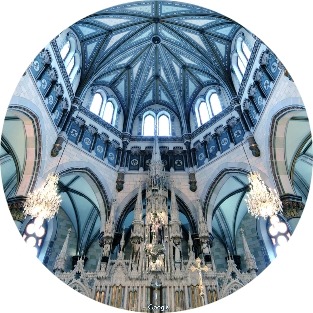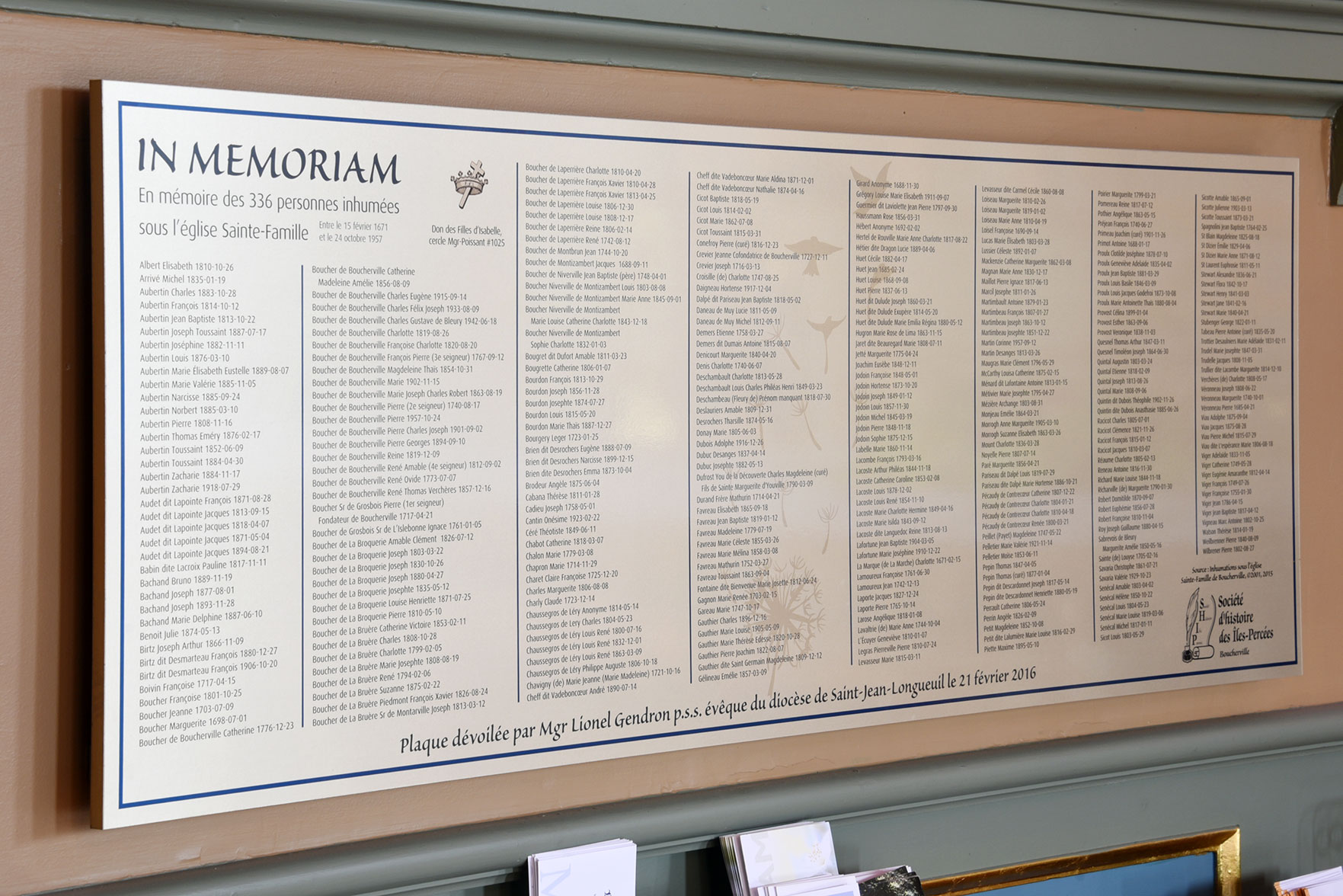
In those days, in Boucherville (as in many other places), not everyone who died ended up six feet under in the cemetery. For a select few, the crypt of a church proved to be the ultimate destination for their remains after a notable life.
Some 336 people are buried in the crypt of Sainte-Famille church. These include four of Boucherville’s five hereditary seigneurs and their families, as well as parish priests and various parishioners. The last burial dates back to 1954.
And how to explain the absence of the fifth hereditary seigneur? He was considered anticlerical, which was quite exceptional at the time and attributable to the patriots. He died in 1857 and was buried on his own land. In fact, six feet under his land.
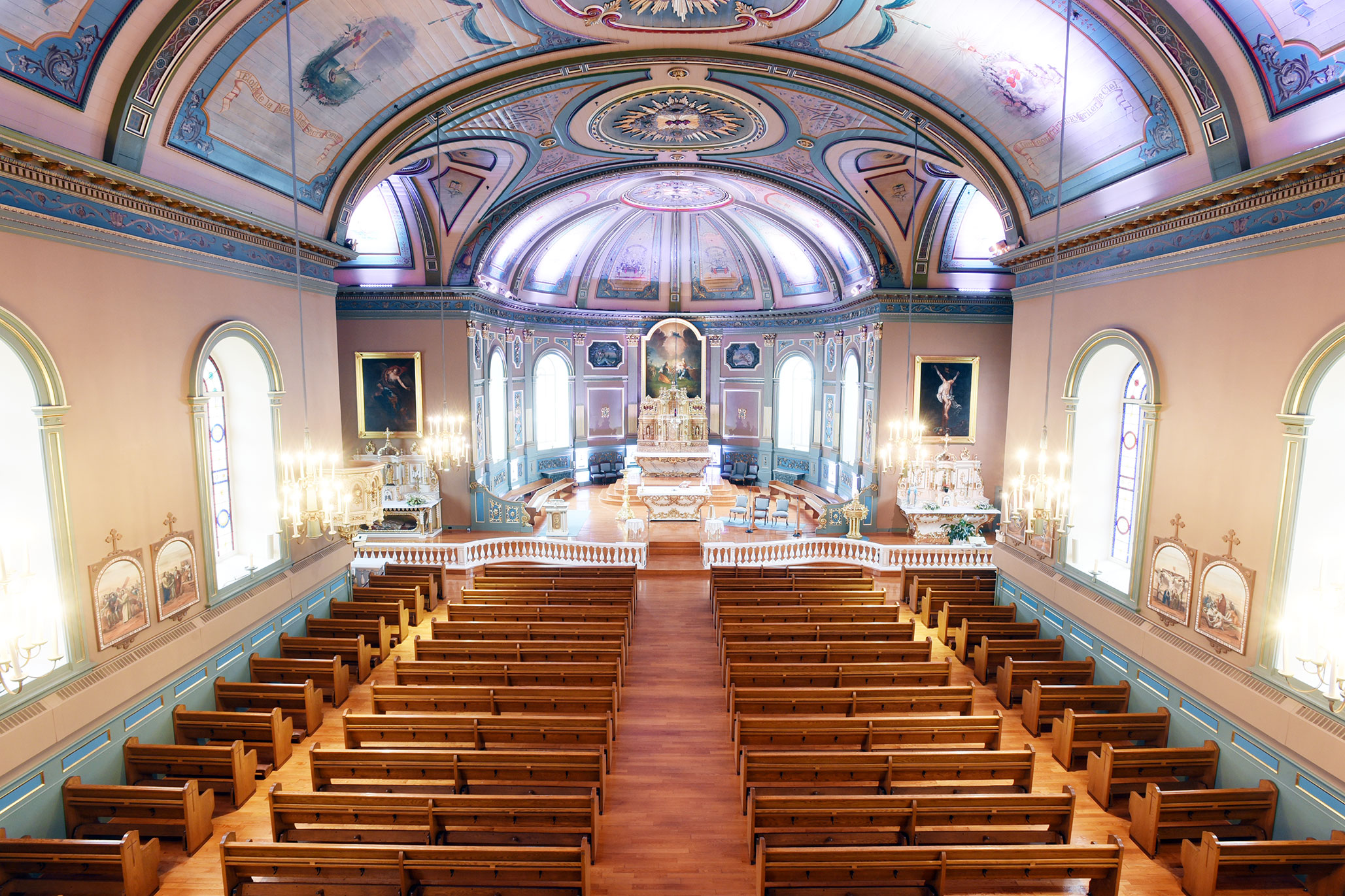
If you associate the word “vault” with a bank, you’re sure to be dazzled by what you’re about to discover at Sainte-Famille church. An impressive architectural achievement inspired by the Louis XVI style, the barrel vault, which extends into the nave, features double arches and moldings designed in 1879. The result also evokes works discovered during excavations in Pompeii.
The whole is the fruit of remarkable work by talented artists such as Bourgeau, Beaulieu and Berlinguet. In fact, if you look up at the ceiling, you’ll see lovely angel heads sculpted by Berlinguet at the transepts and above the choir.
Their beauty, preserved over all these years, is particularly impressive in this age of programmed obsolescence…
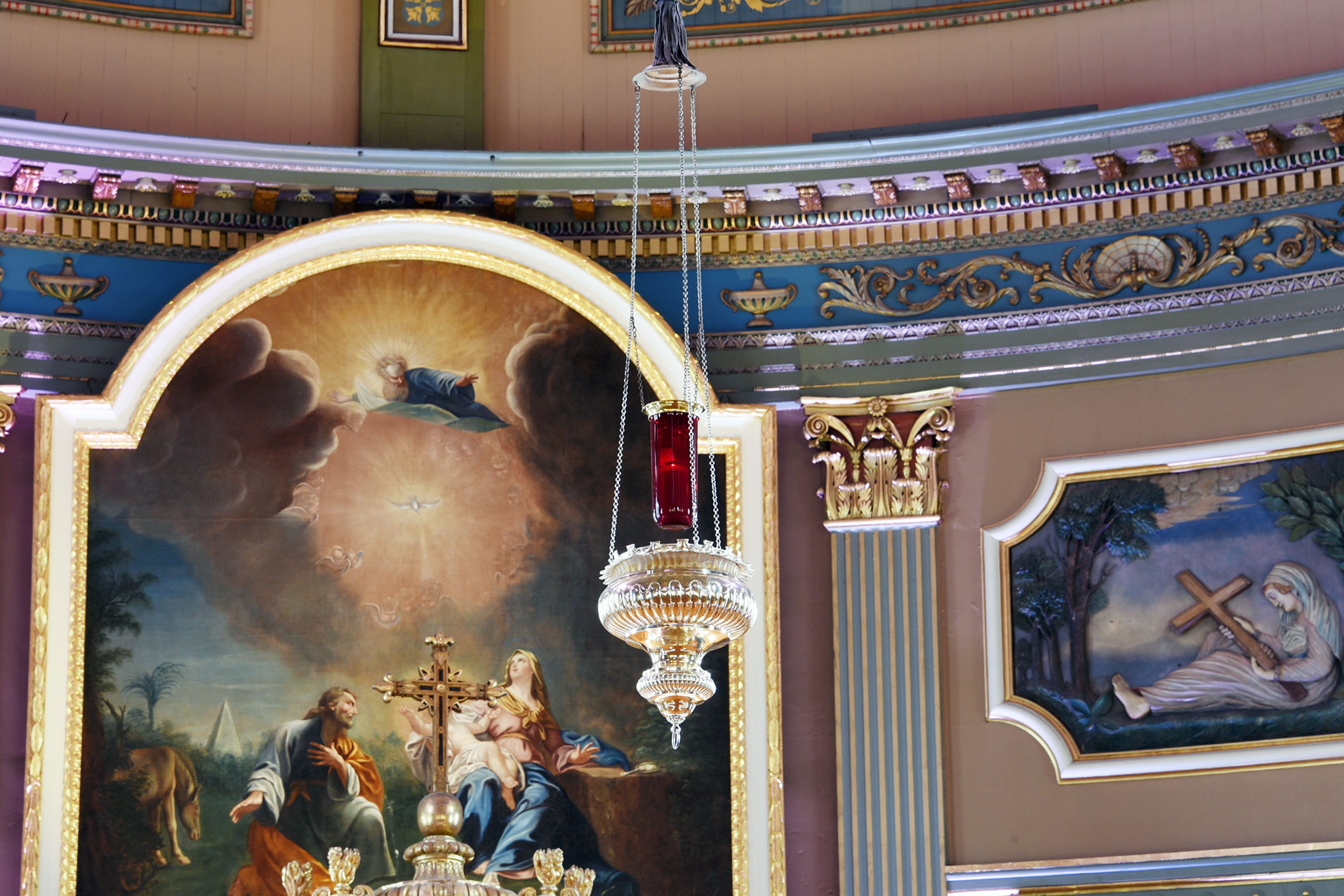
In a place steeped in history and filled with heritage treasures like Sainte-Famille Church, even light can draw its source from the remnants of a distant past. Take the sanctuary lamp.
Located in the choir, it was made in… 1790. In other words, many years before light switches appeared on the walls. Similar to the one at Montreal’s Hôtel-Dieu, the lamp is made of solid silver. Embellished with a strawberry and decorated with shallow gadroons (ornaments), this jewel bears the hallmark of a great artist of the time, Michel Arnoldi.
When we say that a visit to the church will enlighten you on the richness of our religious heritage…
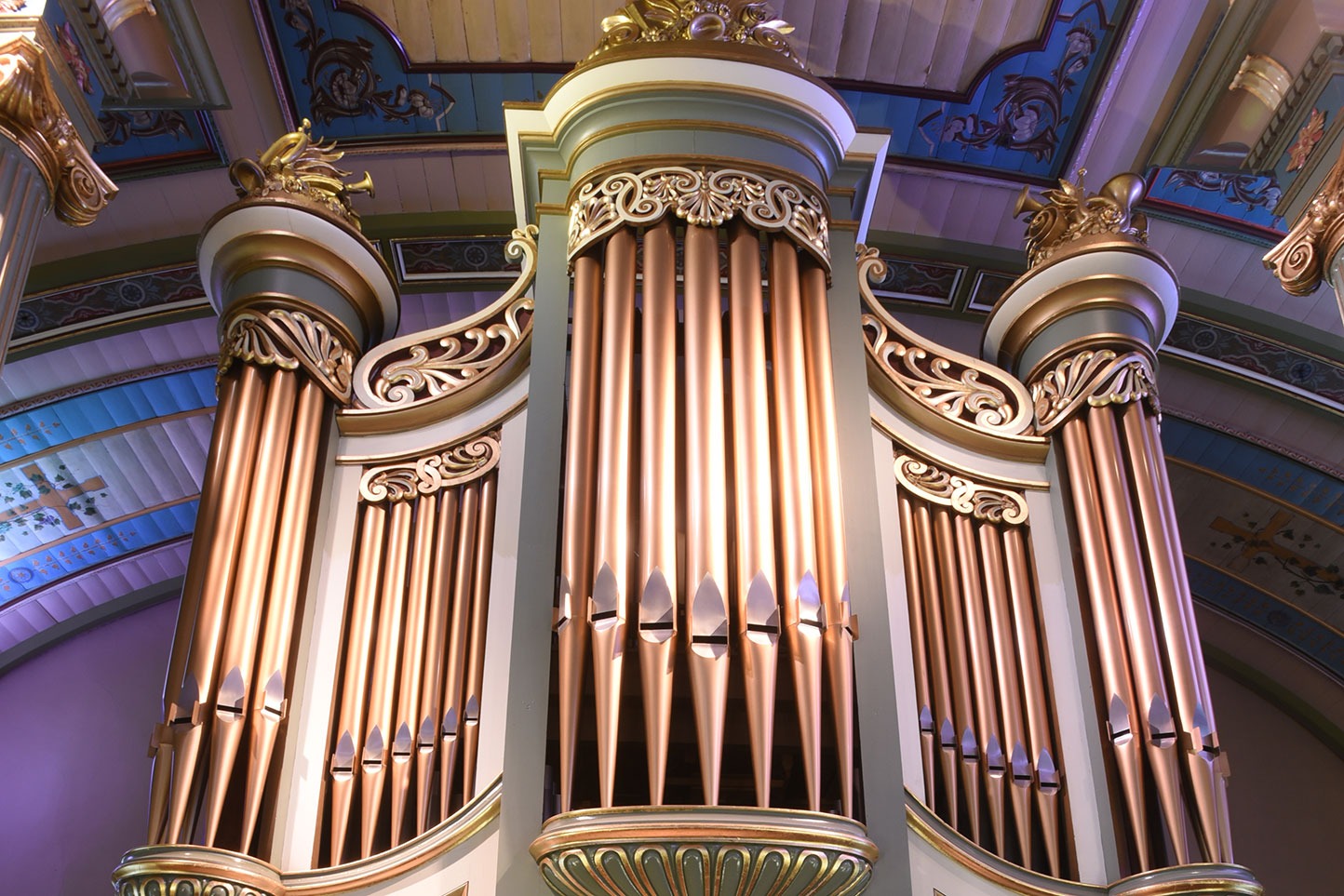
Question: what is a buffet in a church? No, it’s not the table with the little crustless sandwiches served in the basement after a baptism. Rather, it’s the imposing structure housing the organ’s many pipes.
The organ at Sainte-Famille church, dating from 1847, is one of the oldest preserved in Quebec. The organ, of course, has since been modernized. Dating from 1996 and built here in Quebec by Casavant, it still retains two stops (a set of pipes of the same type) from the old instrument.
In all, the current organ, which weighs five tons, has some 25 stops totalling almost 1,600 pipes. Let’s just say there are no plans to move it just yet…
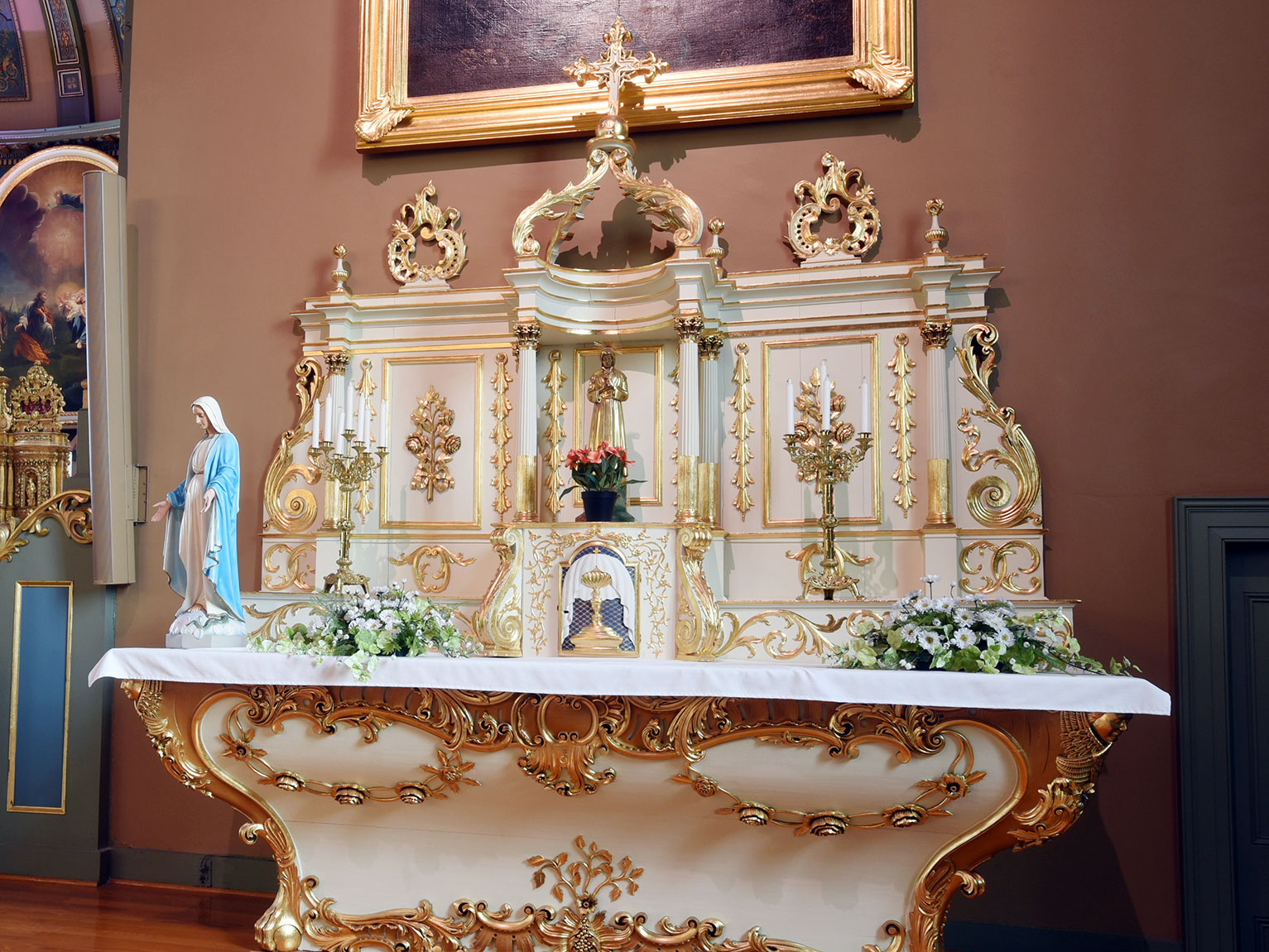
The tabernacle is an essential component of religious heritage, and often a masterpiece that has stood the test of time. Sainte-Famille church has two: one in the transept altar on the right, the other on the left. Each is also accompanied by a tomb.
The one on the right is dedicated to the famous Marguerite d’Youville, Canada’s first saint and, incidentally, great-granddaughter of Boucherville founder Pierre Boucher. On the left, the tomb houses the wax recumbent of a 4th-century Roman soldier, Saint Généreux.
Both manufactured in 1802, the tabernacles are the work of a great Quebec artist by the name of Louis Quévillon.
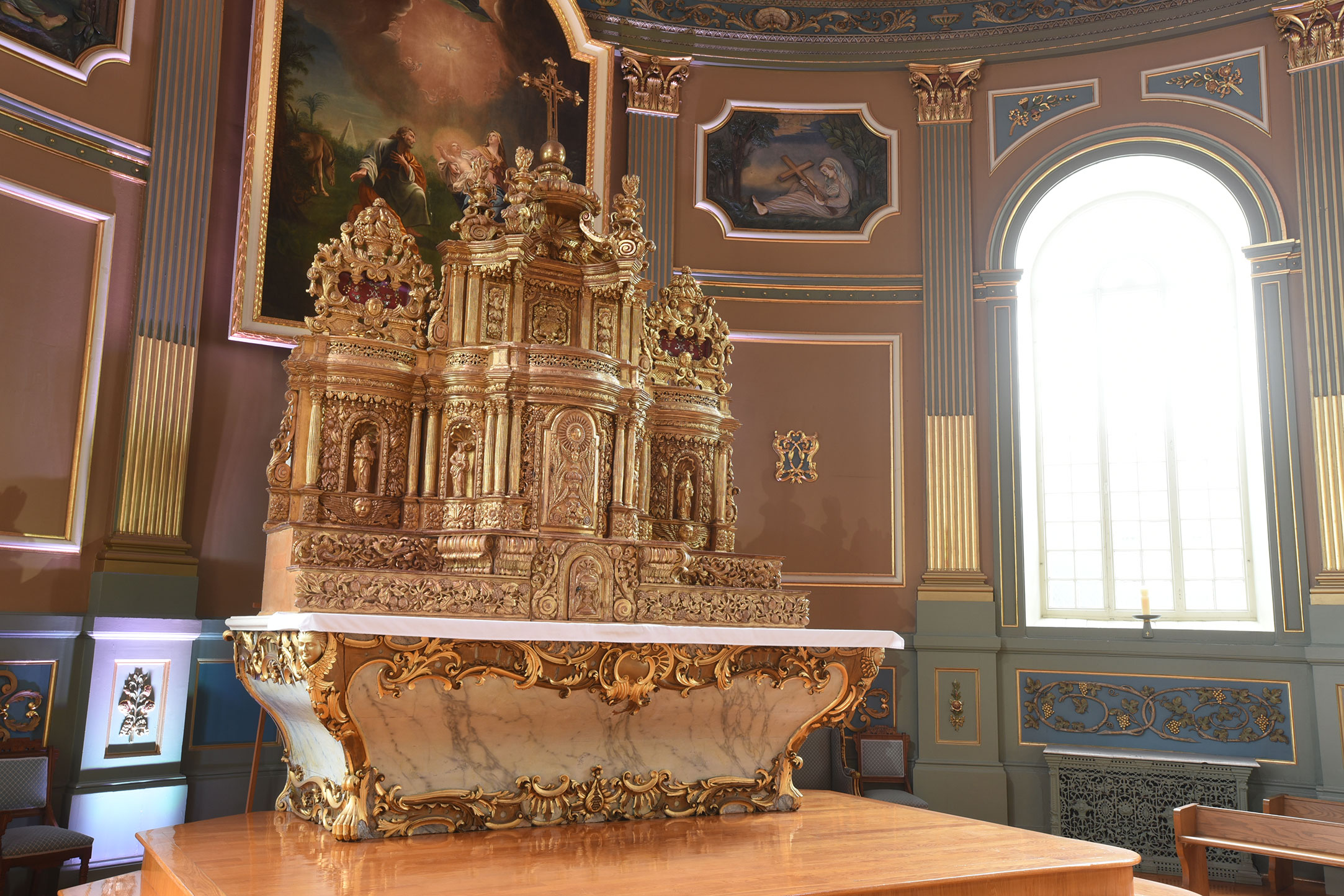
These days, you’d be hard pressed to find a piece of furniture as impressive as the tabernacle on the high altar of Sainte-Famille church.
Considered one of Quebec’s masterpieces of early sculpture, this imposing piece dating from 1745 is a sight to behold: two tiers, four statues of evangelists, relics of four saints, six candlesticks, a baldachin, a monstrance, ornaments, a crucifix… And, underneath, a tomb, this one dating from 1801.
It’s hard to imagine what their creators, names like Bolvin and Quévillon, could be doing today!
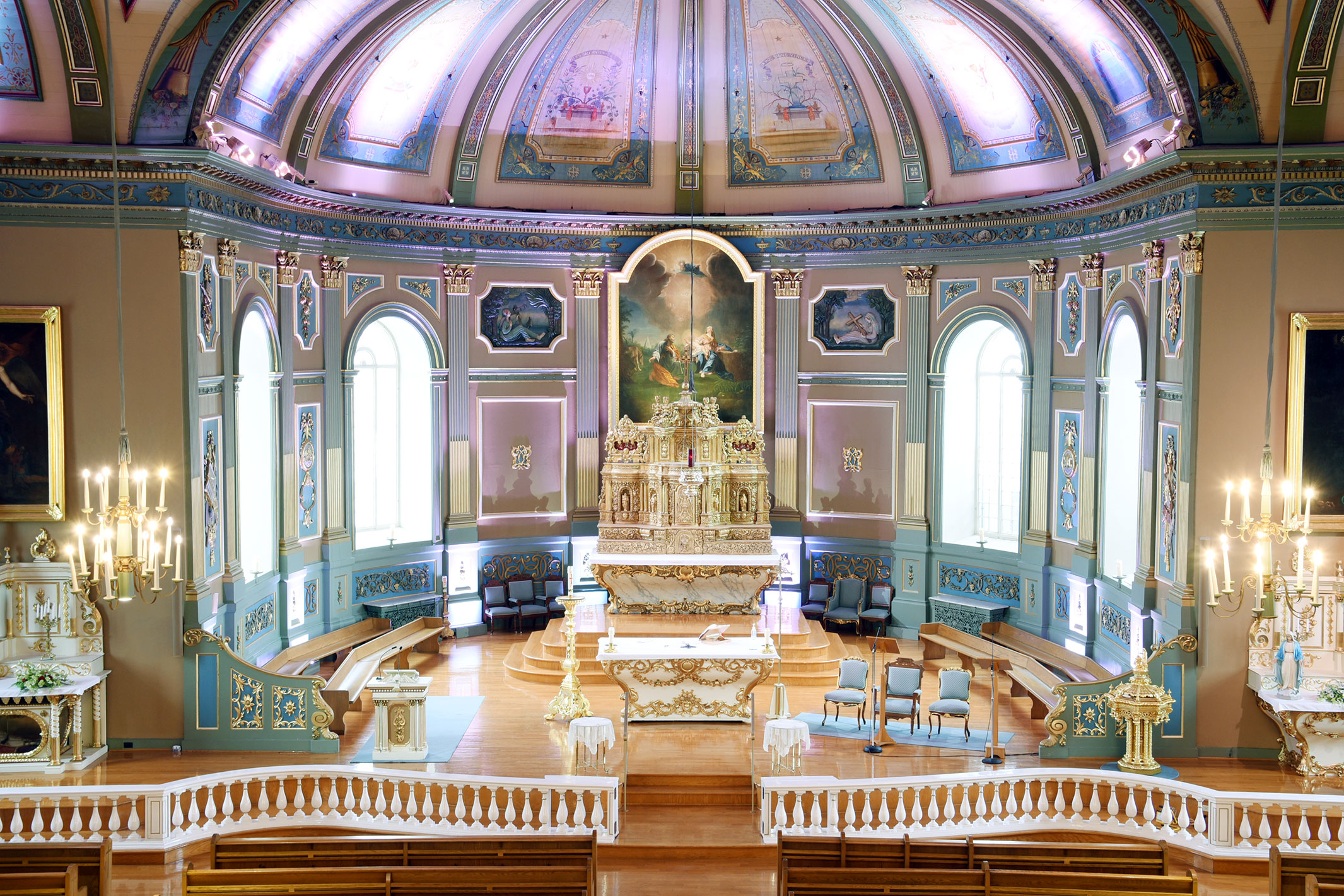
Sainte-Famille Church takes the term “renovating” to a whole new level. We’re not just talking about repainting the bedroom or redoing the cupboards. This impressive place of worship has undergone not one, but three major restorations over the years.
The first, in 1879 (36 years after it was rebuilt following a fire – see separate text), led, among other things, to the construction of the current baptistery and the magnificent frescoes painted on the vault. The superb blue, green and gold mouldings made their appearance in 1969.
More recently, between 2006 and 2016, a rejuvenation program has restored the windows to their former glory.
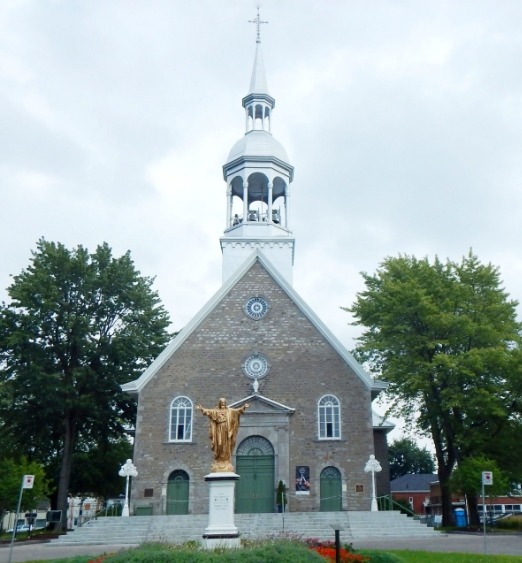
If you look at the façade of Sainte-Famille church from bottom to top, you’ll probably notice a difference in the color of the stone. It’s a permanent reminder of a catastrophe that left its mark on Boucherville.
On June 20, 1843, a huge fire ravaged a large part of what was then a village – sweeping away the church in its wake. All that remained were the walls and, thanks to the quick intervention of the parish priest and parishioners, the altars, religious objects and paintings (but sadly, not the organ or pulpit).
Louis-Thomas Berlinguet (see text on the church tower) was entrusted with the task of refurbishing the building. Hence the two-tone facade, with the upper section, once collapsed, added to the original wall. Saving religious heritage is a flame that never goes out…
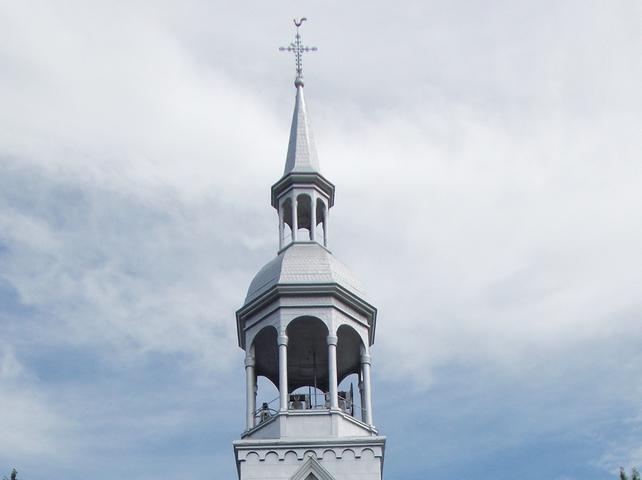
It’s been echoing along the Boucherville waterfront for nearly 180 years. 1844, to be precise. We’re talking, of course, about the steeple of Sainte-Famille church (with five bells in all), designed by artist Louis-Thomas Berlinguet and consisting of two lanterns.
Having announced many masses and events since a time when a parking lot consisted of a pole for tying up horses, this bell tower took a leap into modernity by switching from rope-pulling to electric operation in 1953. Bells that don’t need arms? Sounds unthinkable, Berlinguet would no doubt have said…
